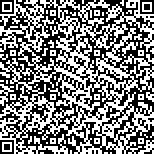| 摘要: |
| 目的 为快速掌握若羌绿洲特色林果业种植信息,提高特色林果资源调查的信息化水平,服务若羌特色林果业的发展。方法 文章通过野外调查和室内文献资料分析建立遥感分类的先验知识,采用面向对象的影像分析方法,构建多尺度分割结果的光谱、植被指数、形状、纹理等特征,采用CART和随机森林算法进行遥感分类,分析使用不同分类算法、特征集对分类结果的影响。结果 (1)随机森林算法相比于CART算法总体分类效果好,分类精度高,特征数据集的加入对CART算法的分类精度影响较小,而对随机森林算法分类精度的提升较为明显。(2)形状特征对形状差异较大的地物具有较强的识别能力,植被指数特征能有效识别植被和非植被地物,纹理特征则对分类精度的影响较小。(3)综合所有特征集并结合随机森林算法的分类结果最优,总体精度88.43%,Kappa系数85.47%,面积精度96.89%。结论 形状、植被指数、纹理等特征集的加入对各个地类的分类精度的影响不同,应具体问题具体分析,随机森林算法比CART算法更适用于多维特征数据集的作物遥感分类任务。 |
| 关键词: 特色林果作物 面向对象 种植信息提取 Sentinel-2 适用性分析 |
| DOI:10.7621/cjarrp.1005-9121.20220221 |
| 分类号:S511 |
| 基金项目:新疆特色林果业典型树种分布遥感监测(2019)(XJ-070) |
|
| APPLICABILITY ANALYSIS OF REMOTE SENSING EXTRACTION METHOD OF PLANTING INFORMATION OF LOCAL FRUIT CROP IN RUOQIANG OASIS |
|
Shen Jianglong1, Zheng Jianghua1, Tuerxun Nigela1, Wang Lei2, Luo Lei2
|
|
1.Key Laboratory of Oasis, College of Resources and Environmental Sciences, Xinjiang University, Urumqi 830011, Xinjiang, China;2.Institute of Modern Forestry, Xinjiang Academy of Forestry Sciences, Urumqi 830012, Xinjiang, China
|
| Abstract: |
| This research aims to quickly grasp the information of the cultivation of the characteristic forest fruit industry in the Ruoqiang oasis, improve the information level of the investigation of the characteristic forest fruit resources, and serve the development of the characteristic forest fruit industry. This study established a prior knowledge of remote sensing classification through field investigation and indoor literature analysis, built the spectral, vegetation index, shape index, texture characteristics of multi-scale segmentation results based on object-oriented imaging analysis methods, used CART and random forest algorithms to extract planting information of Ruoqiang oasis, and finally analyzed the effects of different classification algorithms and feature sets on classification results. As a result, there were three conclusions as follows. Firstly, the random forest showed better overall classification effect, higher classification accuracy than CART. The addition of characteristic data had less influence on the CART but the improvement of random forest classification accuracy was obvious. Secondly, the shape index had a strong recognition ability to the land with obviously differences in shape; the vegetation index feature can effectively identify vegetation and non-vegetation landtype; the texture feature had less influence on the classification accuracy. Thirdly, the sets with all feature combined with the random forest was the best classification method, with overall accuracy of 88.43%, Kappa coefficient of 85.47%, area accuracy of 96.89%. As shown above, the addition of shape index, vegetation index, texture features and other characteristics has different effects on the classification accuracy of each category. The effect should be analyzed specifically. Random forest is more suitable for crop remote sensing classification task of multi-dimensional feature data than CART. |
| Key words: local fruit crop object-oriented planting information extraction Sentinel-2 applicability analysis |

